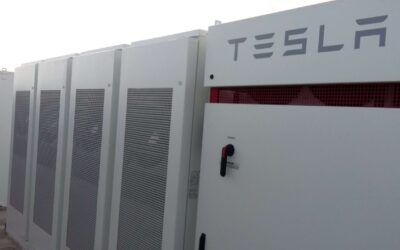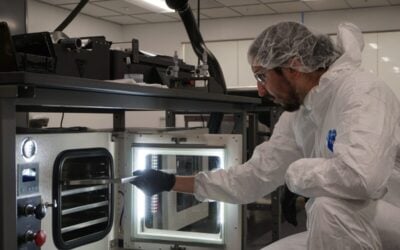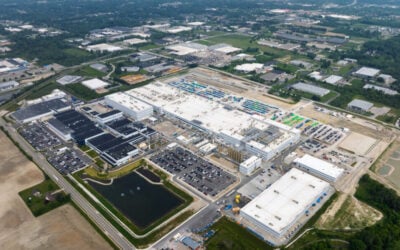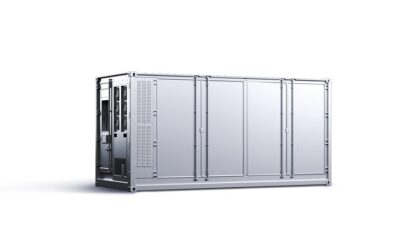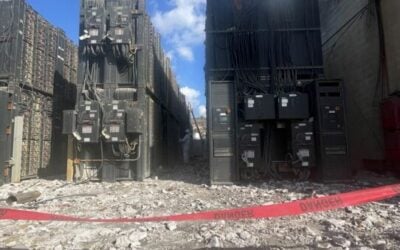
Being able to create a single contract for project delivery is perhaps the biggest advantage of vertically integrating battery energy storage system (BESS) manufacturing with system integration, according to the CEO of LG Energy Solution (LG ES) Vertech.
South Korean battery and BESS manufacturer LG ES launched its Vertech system integration subsidiary in September last year at the RE+ trade show in Las Vegas, US.
Enjoy 12 months of exclusive analysis
- Regular insight and analysis of the industry’s biggest developments
- In-depth interviews with the industry’s leading figures
- Annual digital subscription to the PV Tech Power journal
- Discounts on Solar Media’s portfolio of events, in-person and virtual
While LG ES has been, and continues to be, a major supplier of batteries and racks to the industry, with a major focus on the US grid-scale market, the 2022 acquisition of system integrator NEC Energy Solutions (NEC ES) gave the company downstream capabilities, too.
LG ES’ plans for its new system integrator arm had been a topic of speculation and discussion for some time following the acquisition.
Jaehong Park, who has been in the battery and energy storage space since 2010, was appointed the company’s CEO in 2022. Speaking to Energy-Storage.news Premium for an exclusive interview, Park said the strategic move to acquire NEC ES came about as the parent company realised that “energy is not just a commodity.”
While the hardware to store the energy is obviously essential, controls, data science and analytics are also “key technologies” in increasing the efficiency of energy storage systems, Park said.
As a pureplay hardware provider, LG ES did not have the visibility into asset performance and lifetime it wanted and that, ultimately, the company felt its customers wanted.
“Being a battery supplier would not help us collect that data and would not help us address the customer’s pain points,” Park said, adding that the acquisition of the system integrator business enabled LG ES to become a “solution provider, rather than just a commodity provider”.
‘Taking care of the asset for its entire lifespan’
LG ES Vertech had already signed contracts or entered contract negotiations for 10GWh of BESS projects with US-based customers as of mid-December last year.
On the upstream side of the equation, LG ES is building what is thought to be the US’ largest dedicated BESS battery cell production line, with 16GWh of annual production capacity in construction in Queen Creek, Arizona.
When the system integrator launched at RE+ 2023, the company said that its longstanding experience in LFP cell production would be a competitive advantage, while making its products in the US would qualify them for higher rate investment tax credit (ITC) incentives as qualifying domestic content. The Queen Creek production line will be co-located with electric vehicle (EV) battery cell production.
Meanwhile, NEC ES’ technologies, which included the machine learning and artificial intelligence-driven controls platform AEROS, give Vertech software that can perform key tasks, such as degradation analysis and system cost analysis, and revenue optimisation in different market scenarios.
“The most important value of the vertical integration is [creating] one single contract, and the energy storage system (ESS) is not a product that we deliver, and it’s done. We need to take care of this asset for 15 years or 20 years, for its entire lifespan,” Park said.
“In the past, what happened was that when an issue happened at the site, the battery supplier, PCS supplier and system integrators sit down together, to figure out how it is not their problem, rather than trying to figure out what the root cause is and how to solve it, how to repower the asset as soon as possible,” Park said.
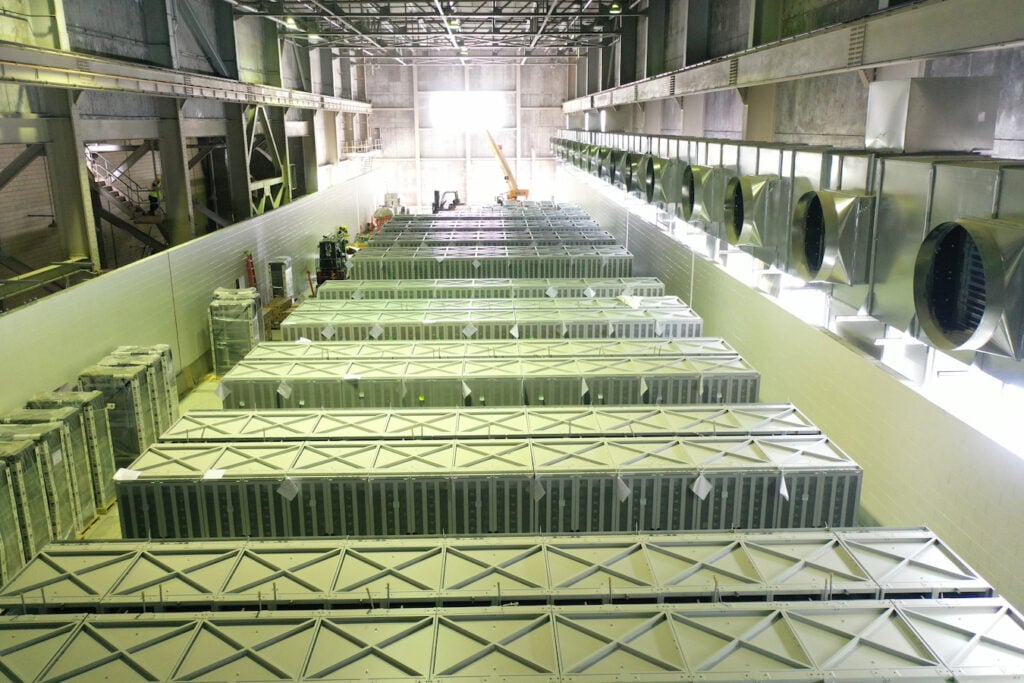
“One single contract with a bankable solution provider is really quite significant to the customer.”
“That’s the number one value that we can deliver as a vertically integrated company. Some customers can take care of the integration themselves, some of the big customers who have the capability, but most of the customers really value the ‘one throat to choke,’ for the entire lifespan.”
Combining ‘top-down’ LG manufacturer perspective with ‘bottom-up’ Vertech integrator perspective
For the solution provider too, having control over the entire system from the cell upwards offers the opportunity to combine a “top-down” upstream manufacturer’s perspective with a “bottom-up” downstream integrator’s perspective, which also has advantages, Park claimed.
“When we developed the products, our approach was: ‘Okay, we have a battery cell, how can we design the battery module to improve the density, to ensure the safety, and then how we can design the battery pack, how we can design the battery container?”
“That was the way of thinking as a battery cell manufacturer, but being a system integrator we see from the top down,” Park said.
“What does the project look like? What does the system look like? What kind of things do we need to do to help our EPC partner reduce their labour and time spent in the field? How can we help make maintenance easier?”

